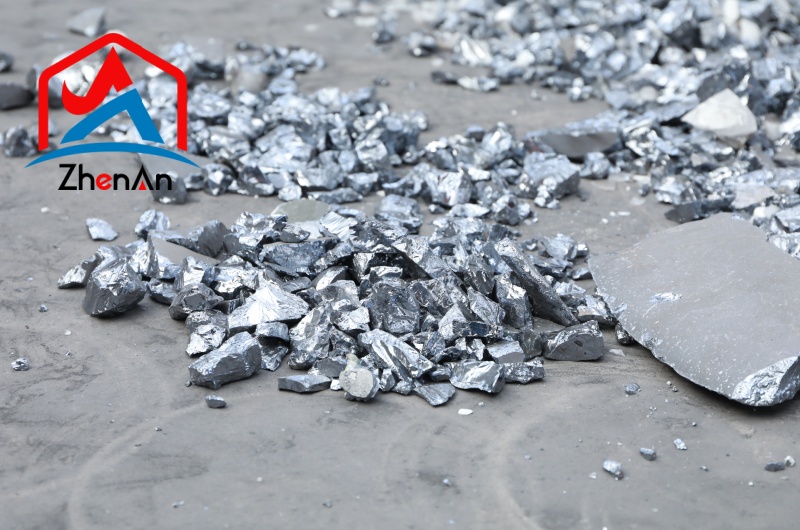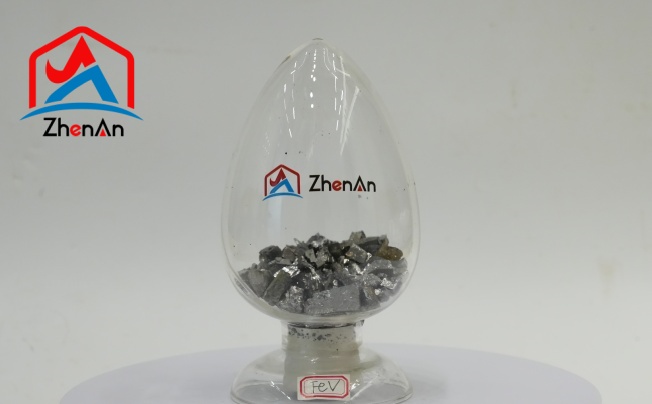BY  GENN
GENN
2024/07
Blog
What Is The Melting Point Of Ferrotitanium?
What is Ferrotitanium?
Definition and Composition
Ferrotitanium is a ferroalloy consisting of iron and titanium. The exact composition can vary, but it typically contains around 20% to 75% titanium by weight. The presence of titanium imparts desirable properties to the alloy, such as increased strength, corrosion resistance, and heat resistance.
The precise ratio of iron to titanium in ferrotitanium can be adjusted based on the specific requirements of various applications. This alloy is commonly produced through the aluminothermic reduction of titanium tetrachloride with iron, resulting in a material that combines the best attributes of both elements.
Common Uses in Various Industries
Ferrotitanium finds extensive applications across diverse industries due to its unique properties. In the aerospace industry, it is used in manufacturing aircraft components, where its high strength-to-weight ratio and heat resistance are highly advantageous.
Furthermore, ferrotitanium’s corrosion-resistant nature makes it a preferred material for marine applications like shipbuilding and offshore structures. In the automotive sector, this alloy is employed in producing high-performance engine parts that require exceptional durability under harsh operating conditions.
Additionally, ferrotitanium plays a crucial role in the production of medical implants like orthopedic devices due to its biocompatibility and strength characteristics. Each application underscores the versatility and utility of ferrotitanium across different sectors, highlighting its significance as a key material in modern industrial processes.
Delving Into the Melting Point of Ferrotitanium
Factors Influencing the Melting Point
The melting point of ferrotitanium, a crucial parameter in its application and processing, is influenced by several key factors. The primary factor is the composition of ferrotitanium itself.
The ratio of iron to titanium in the alloy plays a significant role in determining its melting point. Generally, ferrotitanium with a higher titanium content tends to have a higher melting point due to the elevated melting point of pure titanium compared to iron.
Another factor influencing the melting point is any impurities present in the ferrotitanium alloy. Impurities can affect the crystalline structure and bonding within the alloy, leading to variations in its melting behavior.
Additionally, any alloying elements added to enhance specific properties can also impact the overall melting point of ferrotitanium. Understanding these factors is essential for optimizing manufacturing processes and ensuring consistent quality in the final product.
Comparison to Other Titanium Alloys
When comparing the melting point of ferrotitanium with other titanium alloys, it becomes clear that each alloy possesses unique characteristics based on its composition. Ferrotitanium generally has a lower melting point compared to pure titanium due to the presence of iron as an alloying element.
However, when compared to other titanium alloys containing different elements like aluminum or vanadium, ferrotitanium may exhibit a higher or lower melting point depending on their specific compositions. The comparison also extends to practical applications where specific properties such as strength, corrosion resistance, and heat tolerance are required.
Ferrotitanium’s distinct melting behavior makes it suitable for certain applications where a balance between strength and machinability is necessary. Understanding how ferrotitanium stacks up against other titanium alloys provides valuable insights into selecting the most appropriate material for various industrial needs.
High-Temperature Applications
- Aerospace Industry
In the aerospace industry, ferrotitanium plays a crucial role in the manufacturing of components that must withstand extreme temperatures and pressures. Its high melting point allows it to be used in rocket engines, where it contributes to the efficient propulsion of spacecraft into orbit.
Ferrotitanium’s ability to withstand high temperatures makes it an ideal material for parts subjected to intense heat during re-entry into Earth’s atmosphere. Research and development continue to explore new applications for ferrotitanium in spacecraft design, pushing the boundaries of space exploration.
- Defense Industry
Within the defense industry, ferrotitanium finds applications in creating armor plating for military vehicles and aircraft. Its high melting point ensures durability and resilience against explosive forces and ballistic impacts.
Ferrotitanium’s ability to maintain its structural integrity at high temperatures makes it a reliable choice for defense systems exposed to harsh environments. The defense sector continually invests in research to enhance ferrotitanium’s properties for military applications, safeguarding national security interests.
- Nuclear Power Plants
In nuclear power plants, ferrotitanium is utilized due to its resistance to corrosion and ability to handle high operating temperatures without compromising structural stability. Components such as reactor pressure vessels and fuel cladding rely on ferrotitanium’s robust properties to contain nuclear reactions safely.
The metal’s elevated melting point enables it to endure the extreme conditions within nuclear reactors while ensuring long-term operational efficiency. Ongoing studies focus on optimizing ferrotitanium alloys for enhanced performance and safety standards within the nuclear power industry.
Low-Temperature Applications
- Automotive Industry
Within the automotive sector, ferrotitanium finds application in engine components that require resistance against low temperatures during operation. As a cold-resistant alloy, it enhances the performance of vehicles in challenging weather conditions by maintaining structural integrity at sub-zero temperatures. Engine parts such as pistons and valves benefit from ferrotitanium’s unique properties, contributing to improved fuel efficiency and overall vehicle durability under extreme cold environments.
- Medical Implants
In the medical field, ferrotitanium alloys are employed in orthopedic implants due to their biocompatibility and corrosion resistance at low temperatures within the human body. These implants help restore function and mobility for patients requiring joint replacements or bone fixation surgeries. Ferrotitanium’s low-temperature properties ensure seamless integration with natural tissues while providing long-lasting support for orthopedic structures affected by injury or degenerative conditions.
- Food Processing Industry
The food processing industry utilizes ferrotitanium alloys in equipment designed for cold storage facilities where temperature control is critical for preserving food quality and safety standards. Fermenters, refrigeration units, and storage tanks made from ferrotitanium ensure optimal conditions are maintained during food production processes at low temperatures. The metal’s resistance against corrosion under refrigeration environments enhances hygiene practices within food processing facilities while extending the shelf life for perishable goods stored in controlled cold settings.












